Successful Shopping in Boertala OR I Find the Kohl Pencil Sharpener!
Our Sunshine Hotel was relatively clean and comfortable although annoyingly, and like many of the hotels we stayed in during our travels through Xinjiang, it was in real need of proper maintenance. The seals on the bathroom screen leaked badly and when we showered, the water flow became a tidal wave, flooding the floor and leaking out onto the carpeted living area. We of course tried as best as we could to mop it up with the towels.... But apart from that minor irritation, we were quite pleased with our accommodation and its central location - and especially with our helpful policeman friend.
After a long trip to Boertala the previous day, we thoroughly enjoyed a later start and the opportunity just to sit and catch our breath. It was one the best reasons for travelling with just a guide and driver. We could be flexible with our journey and visit what we wanted to, at our own pace, without disrupting other tourists. More realistically, we also didn't have to put up with the whims and annoyances of other people!
That morning, Abdulrahman advised the storm we had experienced in Buerjin two days before had caused such massive landslides and extensive damage to the roads in the Yining district, that we were unable to visit the Shota Gorge in the Tian Shan (Celestial) Mountain Ranges which was scheduled the day after our stay in Yining. I think we looked suitably disappointed but were in fact absolutely delighted as it meant one less night staying in one of those horrible hostels. Our itinerary indicated we had another three nights of similarly styled accommodation - and after our Hemu experience, we were dreading the following three days. Cancelling our Shota tour also gave us the flexibility of one extra day which we decided we would like to spend in our favourite city of Kashgar in southern Xinjiang. We were feeling VERY much happier.
While Alan read, I decided to visit the supermarket to buy some more toffees and snack foods to eat on what was usually a long and lunchless journey. Well, of course, I really wanted to visit the cosmetic shop - just in the remote case I could buy a kohl pencil sharpener....
Buying toffees in the supermarket was not all that easy either. There were hundreds of different varieties of sweets but of course I had no idea whether they were fruit flavoured sweets or toffees - and there was no point in trying to explain that either. The lovely young staff was wonderfully friendly and helpful and packed up various plastic bags of sweets for me which they then took to a tiny weighing area before escorting me to the checkout which was opposite the entrance part of supermarket. All very straight forward - if you could read Chinese, that is.
Buoyant with my purchases, I boldly fronted the cosmetic shop. The same young smiling woman was sitting on a stool looking bored and fastidiously filing her nails. "This will be good" I thought. "How on earth will I explain what I want?" I picked up one of the kohl pencils on display, then made the circular actions of trying to sharpen it in a make believe sharpener. Needless to say, the young woman was puzzled, offering to wrap the pencil for me so I could buy it. When she realised that was not what I wanted, she immediately opened a drawer which contained hundreds of sharpeners. I think she was as pleased as I was - most probably that she could get this non-Chinese speaking foreigner out of the shop! I didn't even mind that she gave me a huge hug and a kiss
before I left...
Note: I might add here for my non-kohl savvy readers, you just cannot use an ordinary pencil sharpener because the soft kohl gets clogged in the small orifice. These sharpeners miraculously had an adaptor so you could use an eyebrow or kohl pencil. Kohl technology at its best!
On my return to the hotel even Alan was impressed - I think mostly because I didn't get lost...
As we checked out, our policeman friend came to say goodbye - more cuddles! He had been terrific and we thanked him profusely. Just as we were leaving however, one of the staff called out to Abdulrahman who disappeared into the hotel for quite some time. Apparently, in checking our room the staff had noticed our very soggy towels we used to mop up the flooded bathroom. Despite his protestations, we were charged the equivalent cost of two brand new towels. Sadly, it left a really sour taste in our mouths for this hotel.
About Boertala, Administrative seat of the Boertala Mongola Autonomous Region
Our first destination for the day was a visit to Mysterious Stones Valley. We would then double back through Boertala and head south-west via Sayram Lake to our final destination of Yining city, the seat of the Ili Kazakh Autonomous Prefecture; a distance of approximately 350 kilometers.
Boertala City, otherwise known simply as "Bole"* (Mongolian translation, depending on what source you read: "brown steppe" or "green prairie") is a substantial county-level city and the seat of the Boertala Mongol Autonomous Prefecture. The city occupies an area of some 7,517 square kilometers and houses a population of 450,000 people. From the little we saw of Boertala City it all looked very prosperous, with tree lined avenues, park lands and to our surprise a considerable number of designer ware clothing shops.
* Bold, our Mongolian guide for the Gobi Desert advises in a comment in my last blog entry that it means "brown steppe".
Boertala Prefecture occupies a 27,000 square kilometer, V-shaped basin in the south-west region of the Dzungarian Basin, bordered for 385 kilometers on the north and west by Kazakhstan, Tacheng Prefecture to the east and Yining County and the Tian Shan Mountains to the south. Although known as the "Mongolian Autonomous Prefecture", the region comprises a majority of Han Chinese (67%); the remainder of the 35 other nationalities being mainly Mongol, Uyghur, Kazakh and Hui.
The prefecture enjoys a temperate climate, characterised by arid weather, long sunlight hours and extreme diurnal temperature fluctuations. Boertala Prefecture, which is home to the rich alluvial plains surrounding the glacier fed Boertala River, is an important agricultural region in Xinjiang.
Mysterious Stones Valley
Our journey out of Boertala took us through lush, fertile looking farming land with luxuriant irrigated crops of maize and early heavily headed wheat, almost ready for harvest. Already huge hay bales were stacked high in the fields. Although the agricultural industry appeared to be prosperous, highly mechanised broad acre farming, we noted with interest that groups of peasant women labourers wearing head scarves and long skirts, still chipped for weeds. We wondered why these poor women carried out this menial and inefficient work in such an extensively farmed region. And we did not find out.
Closer to our destination of Mysterious Stones Valley, we passed by more fields of densely flowering marigolds as well as extensive rosella plantations. Abdulrahman told us that the flowers in this region were grown mostly for their properties as commercial dyes. We guessed that the marigolds would also be a very useful crop rotation plant because of their well known ability to reduce nematode plant parasites.
Our road was more like a carefully designed boulevard, attractively lined with rows and rows of tall poplars, all planted extremely close to each other, to encourage long and straight growth, making them suitable for power or construction poles. They would eventually be thinned, with the thinnings being used for commercial timber purposes or for fuel. In the distance lie the gorgeous snow capped Tian Shan Mountain range. It was a really pretty drive.
Some 50 kilometers north-west of Boertala City lies the quaintly named "Mysterious Stones Valley" (otherwise known as: Fantastic Stone Gorge" and "Queer Stone Valley"). The park land of highly eroded and fantastically sculptured rocks is located at elevations between 700-1,350 meters and covers an area of more than 239 square kilometers. Formed some 230 million years ago, the park contains the world's largest granite-porphry* pictographic rock landscape; the extensive strange rock formations formed by centuries of wind, snow and ice erosion of once molten volcanic magna.
*Porphry is a textural (tactile) term for an igneous rock consisting of large grained crystals such as feldspar or quartz, dispersed in a fine-grained silicate rich, fine grained rock.
The countryside was quite fascinating, with exquisitely carved rocks resembling lions, birds and one huge rock even looking remarkably like Karl Marx - although some argue it looks more like a statue of Buddha. And as only the Chinese could, the various rocks have been given poetically descriptive names such as: "Elephant Gets Food", "The Lion Roaring", "Heaven Dog Watches Moon Camel", "Peacock Opens Her Wings", and so on. In many instances, we decided the members of the naming committee must have attained very sophisticated levels of imagination.
The vegetation was interesting too with lots of flowering, arid daisy species and fern leaved prostrate ground covers, obviously all well adapted to the sparse rainfall and wide variety of temperatures.
Like all the other tourist parks we had visited, the only means by which we could enter and explore the valley and its rocky inhabitants was to buy tickets (58 yuan or around AUS$11.00 per person) and travel by tourist trolley car. And after the first hour or so, it was becoming very "ho hum", not enhanced by the audio coverage being exclusively in Chinese and with us heathen foreigners not being able to understand one word. By the way, I don't think we needed too much information - it was all pretty self evident.
There were not a lot of tourists in the park but those there were typical of the trendy, obviously well off young people we had witnessed in Koktokay and Kanas Lake national parks. They did not appear at all interested in the scenery but more absorbed in getting the perfect "selfie". And in fairness we could perhaps empathise with them as after the first few rock visits the scenery did become a bit underwhelming. It did make us smile however, at seeing the young modern Chinese people dressed in such scantily clad tight shorts and tops, happily taking photos on their phones or flashy cameras, of themselves or of each other. Thankfully, prosperity had finally to come to at least a sector of the Chinese people. We reflected on what an immense change had occurred to the country since our first visits some 15 years ago to some of the more miserably, impoverished rural areas of south-east and far west China.
The trolley buses dropped us off at designated tourist sites where we walked around the various rocks until the next bus arrived - which was at around 40 minute intervals. A few hours at the Mysterious Stones Valley was quite enough for us.
Mutton Soup at the Mad Miquanmechunhuilao1 Zahuitang Restauarant!
Abdulrahman had told us we would be having a special lunch at a very popular restaurant at Wutai on our way to Yining. The Miquanmechunhuilao1 Zahuitang, which was run by a Hui* family, apparently excelled in making just one special dish - a mutton soup accompanied by freshly made shallot bread and carrot pickle.
* The Hui are an ethnic Chinese group of apparently Persian background, who practise the Islam religion. They are mainly concentrated in the north-western provinces of the country which according to a 2011 census, is home to approximately 10.5 million Hui people. It was curious to us that the Hui people are ethnically and linguistically similar to Han Chinese with the exception that most of them practice Islam. According to Abdulrahman, the young Hui people who do not follow the same traditions of clothing as do their elders, are almost indistinguishable from the young Han Chinese.
We arrived at 2.00 pm to find the restaurant still absolutely jam packed with local patrons. Queues were waiting to be seated and so when two seats finally became available, Abdulrahman firmly pushed us into the vacant place. I am not sure the other two men dining at the table were entirely pleased to share with two foreigners but I guess, like us they had no option. The rest of the clientele stared at us in disbelief. It was not surprising. We were the only foreigners out of perhaps 200 frantically eating patrons. It was not exactly friendly either....
The restaurant kitchen resembled a mad factory. A large scarfed Hui woman ladled out soup from a huge cauldron into hundreds of dishes while an older chef prepared freshly made bread in a primitive oven topped with white hot coals at the restaurant's front door. Agile young waiters zoomed around with trays of soup, pickles and bread, simultaneously picking up used and emptied dishes and throwing them at great speed back into the kitchen galley where scores of young boys were flat out washing up. Any uneaten soup or bread was emptied straight into a bucket which was located beside each table. Similarly dirty tables were wiped with toilet paper which was thrown in with the slops. It was all pretty gross. The noise of the patrons and the soup bowl throwing waiters was deafening; the frenzied pace of the serving-eating process reminding me of a fast forward of a crazy comedy scene.
It certainly was no place to sit and relax. But the clear soup, laden with slippery cellophane noodles, tofu and spinach was delicious, as was the divine hot buttery shallot bread. Alan and I shared a meal while Abdulrahman and Sabir, now sitting opposite us, had a bowl each. We laughed at the "serviettes", a roll of naked toilet paper plonked fair and square on our laminex table.
But there was no time for niceties, nor to sit and savour the soup - which was especially difficult to eat with a small spoon and chopsticks. Abdulrahman and Sabir finished their meal in no time and were signalling for us to leave. Our friends sharing our table had long gone and another pair was finishing their meal. Other patrons queued for a table glared at us "slow" eaters. I took some photos before we left, then realised we were not impressing the impatient locals - or anyone for that matter.... Alan hated it but I thought it was a fabulous experience, even if we were well and truly out of our comfort zone.
To Sayram Lake - "The Tears of Lovers"
An hour out of Wutai village, we were travelling through vast, high desert country covered by extensive wind towers; the fast flailing blades slicing wildly through an ominous sky. A gale was howling and in the distance, dark indigo storm clouds gathered over the majestic Tian Shan Mountain ranges. A storm was looming.
On our right we passed Sayram Lake, its limpid waters made even more hauntingly beautiful by the silhouettes of several pagodas perched on a solitary island. Two wild horses galloped freely along its lonely mauve shores and low mist slowly engulfed the surrounding snow capped peaks; the eerie solitude of the lake was simply compelling.
Sayram Lake is located near the Kazakhstan border at an elevation of 2,070 meters, and is the largest alpine lake in Xinjiang. Measuring roughly 20 kilometers from east to west and 30 kilometers north to south, it covers a vast area of 454 square kilometers. The surrounds of the lake are inhabited mostly by Kazakh pastoralists along with their sheep, goats and horses. Sayram means "blessing" in Kazakh.
Like so many prominent sites in China, there is a romantic love story about Sayram Lake: "A beautiful girl and a young man were deeply in love. One day, a cruel devil was captivated by the girl's beauty. He captured the girl and confined her to his residence. The girl took a chance to escape, but the devil found out very soon and went after the girl. She was forced to jump into an abyss. Later, her boyfriend heard of this and he was so sad that he jumped into the abyss to be reunited with his lover. Their painful tears flooded into the abyss and formed Sayram Lake".
A rather touching story, but sometimes it would be refreshing to hear about a particularly fat and ugly pair who star in these eternal legends....
Storm Damage Across the Tian Shan to Yining
The last leg of our journey to Yining took us through the magical Tian Shan mountain range. Massive landslides, fallen trees and severe road damage were testament to the recent storms and torrential rain. In some places sides of the steep mountainous countryside had just sliced off as if carved by an omnipotent knife; the fallen trees lying miserably in a heap of debris below. Needless to say, we were delayed by numerous serious road repair works.
Apart from the storm damage however, the steep spruce clad verdant countryside was magnificent. An excellent modern road passed through numerous tunnels and across splendid newly built suspension bridges. Clearly, the government had invested considerable recent effort in building this new motorway.
We arrived in the Yining in the late afternoon. Relieved we were staying in a large city, we were looking forward to a decent hotel and a good meal. Abdulrahman told us there was an excellent Uyghur restaurant a few doors down from the hotel where he and Sabir would be eating, but the staff didn't speak English, nor would they be likely to have an English or even a photographic menu. The restaurant at the hotel was sounding the go.
Well, that was until we were taken to our hotel room. It was more than disappointing. It was appallingly dirty and obviously had not been maintained for eons. The bathroom was filthy and the shower, which must have been leaking through its exposed rusting pipes for years, had formed a huge blackened mould stain on the already butt pocked, soiled carpet - strewn with a masses of long black hairs. The television didn't work and the staff, although they tried hard was not able to assist us. To exacerbate the miserable situation, the rooms didn't have wifi and to use the Internet, we had to go down to the reception. And then sending just one email was like pulling teeth, it was so slow.
I was furious. It was time to phone Abdulrahman. As usual, he didn't answer his phone but he did turn up after a while, suggesting we might like to change rooms. I wanted to change frigg'n hotels! But that he assured us was not possible as there were very few hotels in Yining that were "licensed" to accommodate foreigners. We sighed and looked at another room. It was marginally better - the mould stain was not quite a large as the first but it was also dirty and really substandard. There was apparently no option other than to take it.
By this time it was very late in the day and so dejected and tired, we decided to skip a restaurant meal and look for some wine to go with the day old bread, tomatoes, bananas and cheese we had bought in Boertala. Amazingly, we did find a small supermarket and bought some cold Wushi beer and a bottle of Georgian Badagoni red.
Our situation did not improve. The bread after a day's trip in the car was like cardboard, the cheese was horribly sweet and the tomato, a ball of red mush. Needless to say, the lolly water wine was almost undrinkable - but really, have we ever NOT been able to finish a bottle of wine? (well, yes there was a time in Tashkorgan in southern Xinjiang when we actually threw out a bottle of toxic water - but that's another story). The Wushi beer was good though... Oh yes, so was the banana.
It was not a great start to our stay in Yining City.
To Yining: Stones, Soup & The Tears of Lovers.
Wednesday, June 22, 2016
 Yining County, Xinjiang Uygur, China
Yining County, Xinjiang Uygur, China
Other Entries
-
8Flaming Cliffs: A Paleontologist's Garden of Eden
Jun 0616 days prior Ulaanbaatar, Mongoliaphoto_camera19videocam 0comment 0
Ulaanbaatar, Mongoliaphoto_camera19videocam 0comment 0 -
9To Bayan-Ulgii OR Two Reluctant Campers....
Jun 0715 days prior Ulgii, Mongoliaphoto_camera38videocam 0comment 0
Ulgii, Mongoliaphoto_camera38videocam 0comment 0 -
10To Tuvan Country: Wilds of Altai Tavan Bogd
Jun 0814 days prior Tavan Bogd, Mongoliaphoto_camera21videocam 0comment 0
Tavan Bogd, Mongoliaphoto_camera21videocam 0comment 0 -
11Horse Trek to Tavan Bogd: A Journey of a Life Time
Jun 0913 days prior Altai Tavan Bodg National Park, Mongoliaphoto_camera22videocam 0comment 0
Altai Tavan Bodg National Park, Mongoliaphoto_camera22videocam 0comment 0 -
12Skirting The Tsaagan Gol & A Lonely Bulbal
Jun 1012 days prior Tsengel, Mongoliaphoto_camera35videocam 0comment 2
Tsengel, Mongoliaphoto_camera35videocam 0comment 2 -
13A Lunar Voyage To Khovd
Jun 1210 days prior Khovd, Mongoliaphoto_camera19videocam 0comment 1
Khovd, Mongoliaphoto_camera19videocam 0comment 1 -
14To Bulgan & A Humble But Memorable Lunch
Jun 139 days prior Bulgan Village, Mongoliaphoto_camera24videocam 0comment 4
Bulgan Village, Mongoliaphoto_camera24videocam 0comment 4 -
15A Truckies' Inn & An Onerous Border Crossing
Jun 148 days prior Koktokay Xinjiang, Chinaphoto_camera23videocam 0comment 0
Koktokay Xinjiang, Chinaphoto_camera23videocam 0comment 0 -
16An Insight Into Xinjiang Uyghur Autonomous Region
Jun 148 days prior Koktokay, Chinaphoto_camera4videocam 0comment 2
Koktokay, Chinaphoto_camera4videocam 0comment 2 -
17Keketuohai National Park: "Earth is the Cradle..."
Jun 157 days prior Fuyun City, Chinaphoto_camera24videocam 0comment 3
Fuyun City, Chinaphoto_camera24videocam 0comment 3 -
18To Kanas Lake: A Startling Diversity of Landscapes
Jun 166 days prior Kanas Lake, Chinaphoto_camera38videocam 0comment 3
Kanas Lake, Chinaphoto_camera38videocam 0comment 3 -
19Kanas: "Rich, Beautiful, Mysterious, Enigmatic"
Jun 175 days prior Kanas Lake, Chinaphoto_camera27videocam 0comment 0
Kanas Lake, Chinaphoto_camera27videocam 0comment 0 -
20The Charm, Poetry & Romance of Lake Kanas
Jun 184 days prior Hemu Village, Chinaphoto_camera15videocam 0comment 0
Hemu Village, Chinaphoto_camera15videocam 0comment 0 -
21A Torch Blown Sheep's Head OR Hell in Hemu!
Jun 193 days prior Hemu, Chinaphoto_camera17videocam 0comment 3
Hemu, Chinaphoto_camera17videocam 0comment 3 -
22Early Morning in Hemu; A Deadly Storm Near Buerjin
Jun 193 days prior Burqin, Chinaphoto_camera10videocam 0comment 0
Burqin, Chinaphoto_camera10videocam 0comment 0 -
23To Karamay - Dinosaurs, Ghosts and Derricks
Jun 202 days prior Karamay, Chinaphoto_camera29videocam 0comment 0
Karamay, Chinaphoto_camera29videocam 0comment 0 -
24To Boertala: An Inept Teller, A Lovely Policeman
Jun 211 day prior Boertala, Chinaphoto_camera19videocam 0comment 3
Boertala, Chinaphoto_camera19videocam 0comment 3 -
25To Yining: Stones, Soup & The Tears of Lovers.
Jun 22 Yining County, Chinaphoto_camera36videocam 0comment 3
Yining County, Chinaphoto_camera36videocam 0comment 3 -
26Yining to Narat: From Dejection to Perfection....
Jun 231 day later Narat, Chinaphoto_camera30videocam 0comment 0
Narat, Chinaphoto_camera30videocam 0comment 0 -
27Grasslands of the Sky: Narat & Bayinbulak
Jun 242 days later Bayinbulak, Chinaphoto_camera42videocam 0comment 0
Bayinbulak, Chinaphoto_camera42videocam 0comment 0 -
28Across the Tian Shan: Tears of a Buddhist Princess
Jun 253 days later Kuqa, Chinaphoto_camera36videocam 0comment 0
Kuqa, Chinaphoto_camera36videocam 0comment 0 -
29A Beautiful Face In Kucha
Jun 264 days later Bachu County, Chinaphoto_camera28videocam 0comment 0
Bachu County, Chinaphoto_camera28videocam 0comment 0 -
30Back Home in Exotic, Eclectic Kashgar
Jun 275 days later Kashgar, Chinaphoto_camera27videocam 0comment 2
Kashgar, Chinaphoto_camera27videocam 0comment 2 -
31Last Tango in Kashgar
Jun 286 days later Kashgar, Chinaphoto_camera50videocam 0comment 0
Kashgar, Chinaphoto_camera50videocam 0comment 0 -
32Trials n Tribulations: A Tough Trip to Tashkorgan
Jun 308 days later Tashkorgan, Chinaphoto_camera43videocam 0comment 0
Tashkorgan, Chinaphoto_camera43videocam 0comment 0 -
33How We Nearly Didn't Get to Pakistan.....
Jul 019 days later Passu, Pakistanphoto_camera46videocam 0comment 0
Passu, Pakistanphoto_camera46videocam 0comment 0 -
34Historical Time Line of Key Events in Pakistan
Jul 019 days later Passu, Pakistanphoto_camera16videocam 0comment 1
Passu, Pakistanphoto_camera16videocam 0comment 1 -
35Shimshal: Special Privilege OR Reckless Adventure?
Jul 0210 days later Shimshal, Pakistanphoto_camera61videocam 0comment 1
Shimshal, Pakistanphoto_camera61videocam 0comment 1 -
36To Karimabad OR Revelations of A Royal Guide....
Jul 0311 days later Duikar, Pakistanphoto_camera49videocam 0comment 0
Duikar, Pakistanphoto_camera49videocam 0comment 0 -
37A Not So Spiritual Experience & "Amarican Dog"
Jul 0412 days later Duikar, Pakistanphoto_camera38videocam 0comment 0
Duikar, Pakistanphoto_camera38videocam 0comment 0 -
38Insha'Allah Flight to Islamabad & Sarah Steele
Jul 0513 days later Islamabad, Pakistanphoto_camera27videocam 0comment 0
Islamabad, Pakistanphoto_camera27videocam 0comment 0 -
39A Cancelled Flight - But It's All Part of Travel..
Jul 0614 days later Islamabad, Pakistanphoto_camera8videocam 0comment 0
Islamabad, Pakistanphoto_camera8videocam 0comment 0 -
40A Scenic Flight Over the Karakorams to China
Jul 0614 days later Urumqi, Chinaphoto_camera10videocam 0comment 0
Urumqi, Chinaphoto_camera10videocam 0comment 0 -
41A Short Stay in Shanghai
Jul 0715 days later Shanghai, Chinaphoto_camera8videocam 0comment 0
Shanghai, Chinaphoto_camera8videocam 0comment 0 -
42Post Script - Life After Our Improbable Journey
Jul 1018 days later Crowdy Head, Australiaphoto_camera10videocam 0comment 2
Crowdy Head, Australiaphoto_camera10videocam 0comment 2
Comments
2025-05-23
Comment code: Ask author if the code is blank

 Yining County, Xinjiang Uygur, China
Yining County, Xinjiang Uygur, China
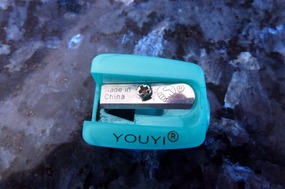
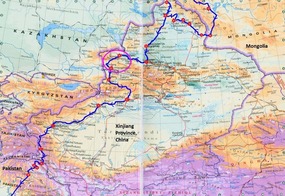
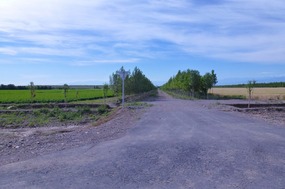

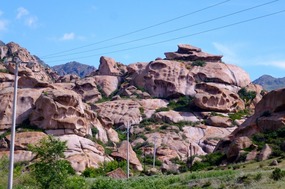
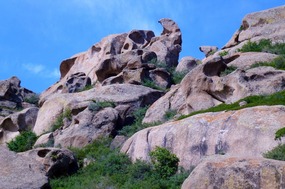
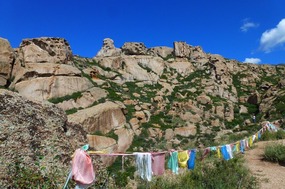

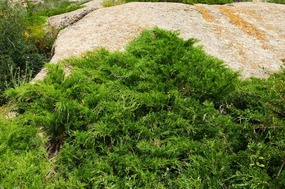
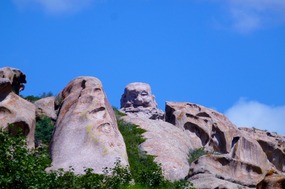
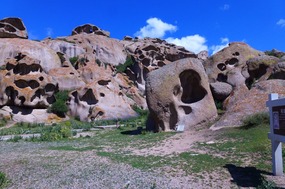
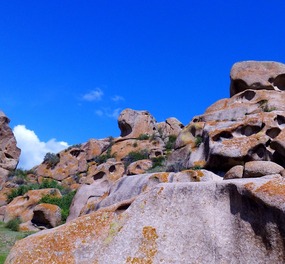
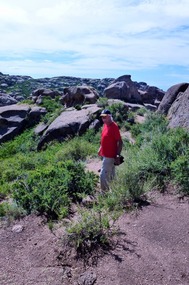
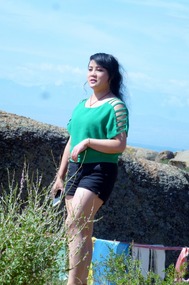
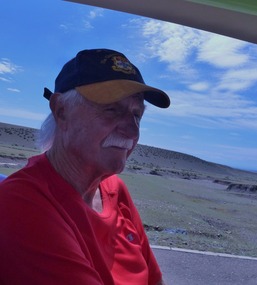
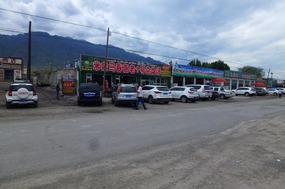
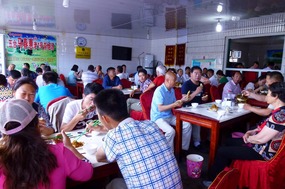
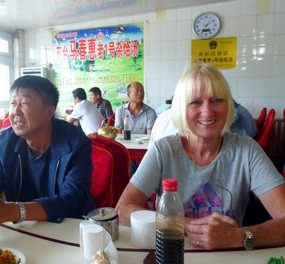
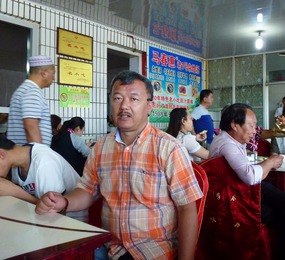
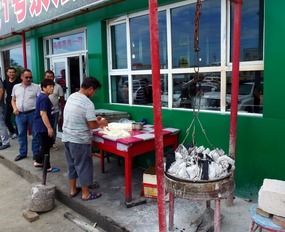
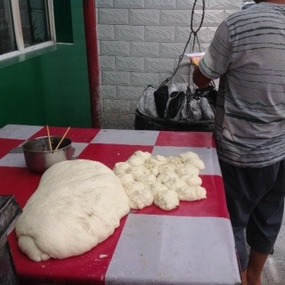

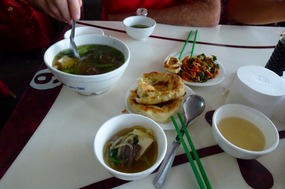
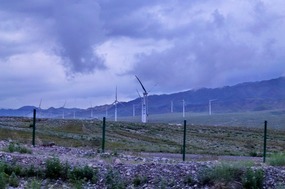
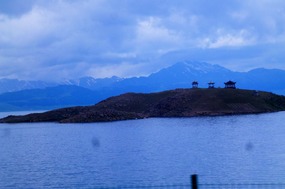
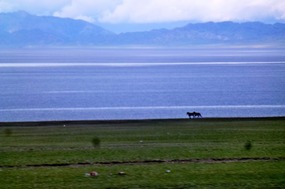
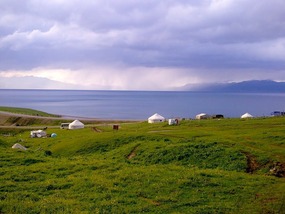
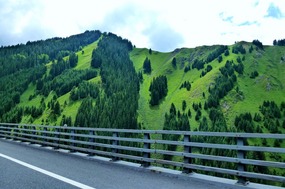
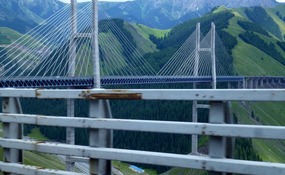
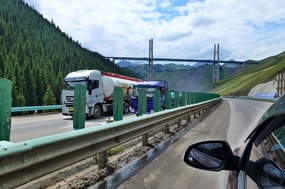
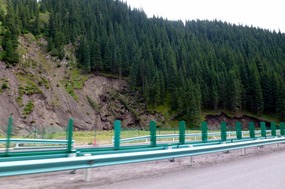
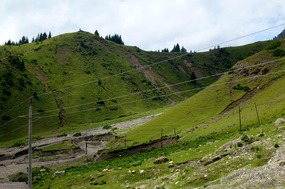
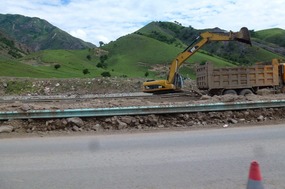
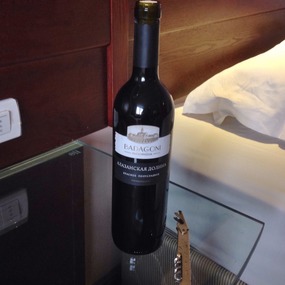
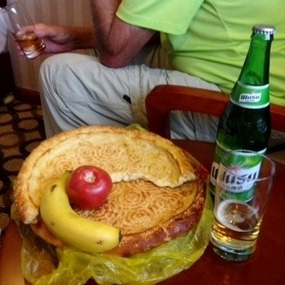




Hazel Lloyd
2017-02-09
A privilege to read
Imagine if your babies back home at Crowdy knew what you were up to
Chris Gongsun
2017-02-28
In 2012 I stayed a couple of nights at the Long Xin hotel in Yining. It was very good, but cost RMB270
crowdywendy
2017-03-01
Thanks Chris. Sounds very reasonable to me!